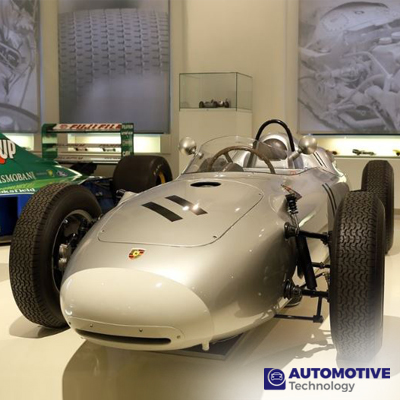Revolutionizing the Road: Automotive Prototypes Shaping Tomorrow's Transportation

Introduction
The automotive industry is undergoing a transformative phase, driven by technological advancements and a shift towards sustainable transportation solutions. Automotive prototypes play a crucial role in this revolution, paving the way for tomorrow's transportation. These prototypes encompass a wide range of innovations, from electric and autonomous vehicles to advanced materials and connectivity solutions. In this article, we delve into the world of automotive prototypes, exploring their impact on the industry and the future of transportation.
1. The Rise of Electric Prototypes
Electric vehicles (EVs) have emerged as a key driver of innovation in the automotive sector. Prototypes in this category showcase cutting-edge battery technologies, improved range, and faster charging capabilities. Companies like Tesla, Rivian, and Lucid Motors are at the forefront of this revolution, pushing the boundaries of what's possible in electric mobility.
- Tesla's Cybertruck prototype represents a bold departure from conventional vehicle designs, featuring an all-electric drivetrain, futuristic styling, and advanced self-driving capabilities.
- Rivian's R1T electric pickup truck combines off-road capability with sustainable performance, showcasing the potential for electric vehicles in diverse market segments.
- Lucid Motors' Air prototype demonstrates the luxury and performance aspects of electric vehicles, with industry-leading range and innovative battery management systems.
These electric prototypes not only offer environmental benefits but also promise enhanced performance, lower operating costs, and a smoother driving experience.
2. Autonomous Vehicle Prototypes
Autonomous driving technology is another area where automotive prototypes are driving significant innovation. Companies like Waymo, Cruise, and Argo AI are developing prototypes with advanced sensors, artificial intelligence algorithms, and real-time data processing capabilities.
- Waymo's self-driving cars have logged millions of miles on public roads, refining their autonomous technology and paving the way for widespread adoption of driverless vehicles.
- Cruise, backed by General Motors, focuses on urban mobility solutions with its Origin prototype, designed from the ground up for autonomous operation and ride-sharing services.
- Argo AI's partnership with Ford has resulted in prototypes like the Ford Mustang Mach-E Autonomous Vehicle, showcasing the integration of autonomous technology into existing vehicle platforms.
These autonomous prototypes are not only redefining personal transportation but also revolutionizing logistics, delivery services, and public transportation systems.
3. Advanced Materials and Manufacturing
Automotive prototypes also showcase advancements in materials science and manufacturing processes. Lightweight materials such as carbon fiber, aluminum alloys, and advanced composites are increasingly used to improve vehicle performance, efficiency, and safety.
- The BMW i3, an electric car prototype, features a carbon fiber-reinforced plastic body structure, reducing weight while maintaining structural integrity and crashworthiness.
- McLaren's Speedtail prototype incorporates innovative materials like titanium and carbon fiber to achieve unparalleled speed and aerodynamic efficiency, setting new benchmarks in hypercar design.
- The Ford F-150 Lightning, an electric pickup truck prototype, utilizes aluminum-alloy body panels to reduce weight and enhance payload capacity, demonstrating the potential of lightweight materials in heavy-duty applications.
These material innovations not only benefit electric and autonomous vehicles but also contribute to sustainability efforts by reducing carbon emissions and resource consumption.
4. Connectivity and Digital Prototypes
- The integration of connectivity and digital technologies is another hallmark of modern automotive prototypes. These prototypes feature seamless connectivity with smartphones, cloud-based services, and advanced infotainment systems, enhancing the overall driving experience and safety features.
- The Tesla Model S Plaid prototype incorporates a large touchscreen interface with over-the-air software updates, allowing for continuous improvements and personalized user experiences.
- The Mercedes-Benz EQS prototype showcases a futuristic dashboard with augmented reality navigation, gesture controls, and AI-powered voice assistants, redefining the concept of in-car technology.
- The Rivian R1S electric SUV prototype integrates connectivity features for outdoor enthusiasts, including off-road navigation tools, vehicle telemetry data, and remote monitoring capabilities.
These digital prototypes not only offer convenience and entertainment but also contribute to data-driven insights for vehicle performance optimization and predictive maintenance.
5. Challenges and Future Trends
While automotive prototypes hold immense promise for the future of transportation, they also face several challenges and considerations. These include regulatory hurdles for autonomous vehicles, infrastructure requirements for electric charging networks, cybersecurity concerns for connected vehicles, and the need for sustainable materials sourcing and recycling practices.
Looking ahead, key trends in automotive prototypes include:
- Continued advancements in electric vehicle range, battery technology, and charging infrastructure to accelerate adoption and address range anxiety.
- Evolution of autonomous driving systems towards higher levels of automation, including fully driverless operation in controlled environments.
- Integration of artificial intelligence, machine learning, and sensor fusion technologies for enhanced safety, decision-making, and predictive analytics.
- Collaboration between automotive manufacturers, technology companies, and government agencies to create a cohesive ecosystem for next-generation mobility solutions.
- Emphasis on sustainability, circular economy principles, and carbon-neutral manufacturing processes to reduce the environmental impact of automotive production and operation.
In conclusion, automotive prototypes are at the forefront of revolutionizing transportation, with innovations in electric, autonomous, materials, connectivity, and digital technologies shaping the future of mobility. As these prototypes evolve into production vehicles, they have the potential to make transportation safer, more efficient, and environmentally sustainable for generations to come.



